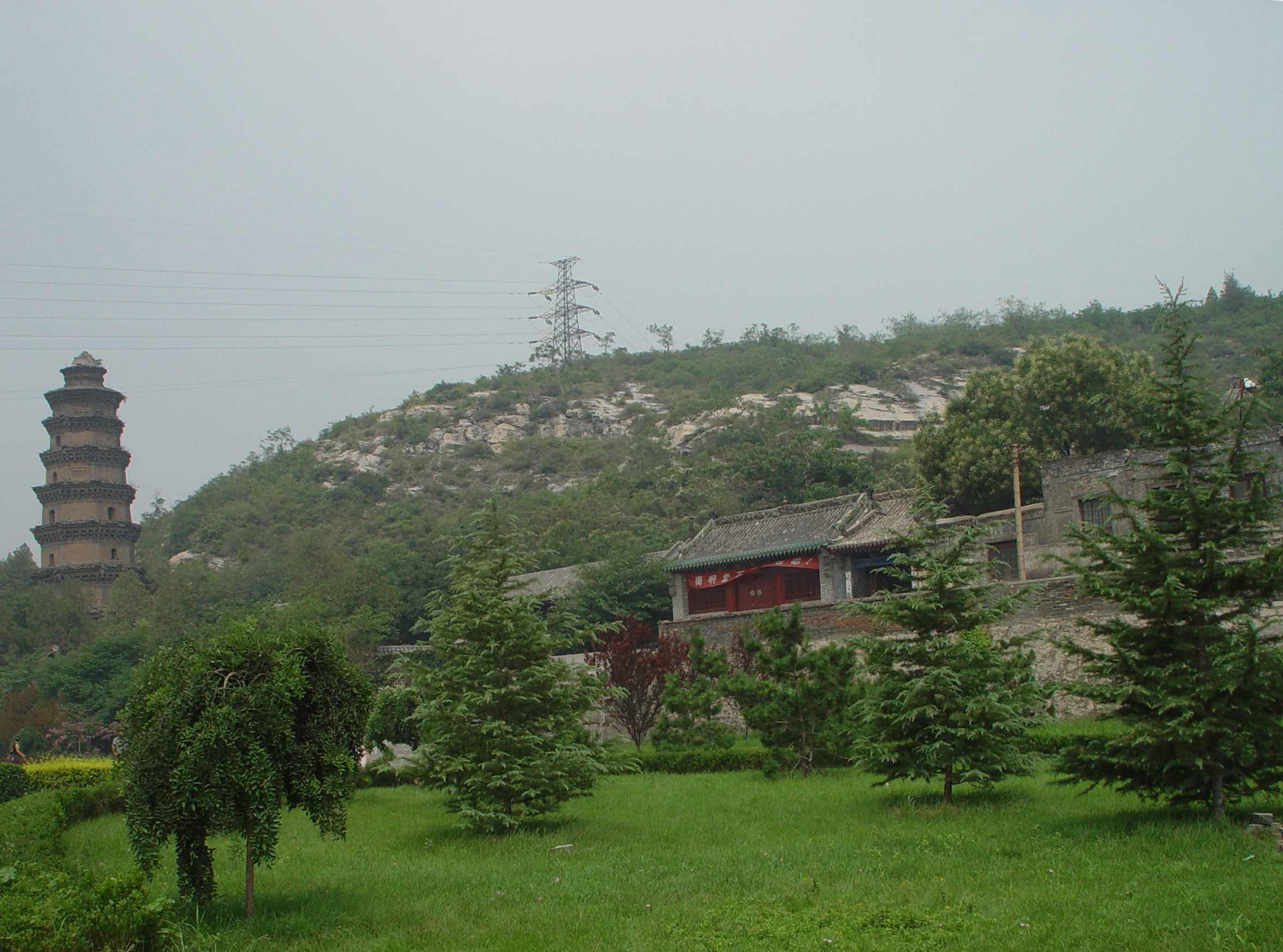South Site | Cave 1

Southern Xiangtangshan, located on the edge of the mining town Fengfeng, is about fifteen kilometers from Northern Xiangtangshan. There is a brick pagoda at the site is from the Song dynasty (960-1279) when the Buddhist temple there was called Xiangtangsi, Temple of Echoing Halls, giving its name to the caves. The site is much smaller in scale, begun later, around 565, and without imperial sponsorship. There are seven main caves of small to medium size on one section of a southwest-facing low cliff in two levels. Two of the caves have central pillars and the others are open chambers with the main images around three walls. Of these, the central pillar caves, Caves 1 and 2, are on the lower level, and Caves 3-6 are above them. Caves 2, 4, 5, and 6 appear to have been designed as a unit and to be earlier than the others. Cave 7 is set slightly lower and to the north of the other upper level caves and appears to be the latest of the main group, possibly as late as the Sui dynasty (581-618). At that time people made repairs to the caves that had been damaged at the end of the Northern Qi. A small Tang dynasty cave is located nearby above the others. During the Tang period (618-907), worshipers also added many smaller carved niches with images inside the existing caves and around the site.
Cave 1 exterior
Cave 1, on the lower level southeast side, has dragons entwined around the columns of the entrance and a Buddha niche above the doorway between the two windows. The interior has a central pillar with a large niche on the front where the principal Buddha image sits, still largely intact. Behind his head is a large halo surrounded by flying divinities carved in relief. The Buddha has two of the original attendant figures, disciples dressed in monks’ robes, still standing beside him. The other figures currently on the altar are clay figures made as replacements for those that were removed in the early twentieth century. Above the main image niche in the central pillar there is a relief scene with Buddhas and bodhisattvas gathered in a teaching assembly. Another relief scene with a central seated Buddha appears just opposite, above doorway of the cave. It depicts the Western Paradise of Amitabha Buddha, a pure fragrant land with jeweled trees and lotus ponds where the Buddhist faithful could be reborn in the next life. On the upper level of the cave walls there is a row of niches, each with a seated Buddha and standing bodhisattvas. The lower level is largely filled with engraved passages of the Avatamsaka sutra or “Flower Garland Sutra." The engraved text does not extend onto the right or south wall and appears not to have been completed as originally planned.
Cave 1 central pillar front altar
Cave 1 interior disciple figure holding lotus bud
Cave 1 central pillar front, upper level Buddhist assembly reliefs
Cave 1 left wall, niches and engraved Avatamsaka sutra
Cave 1 right wall, upper level niches
Cave 1 right wall, lower level domed stupa niche
Cave 1 central pillar, right side niche
Cave 1 central pillar Thousand Buddhas
Cave 1 front wall upper level, Western Paradise scene
